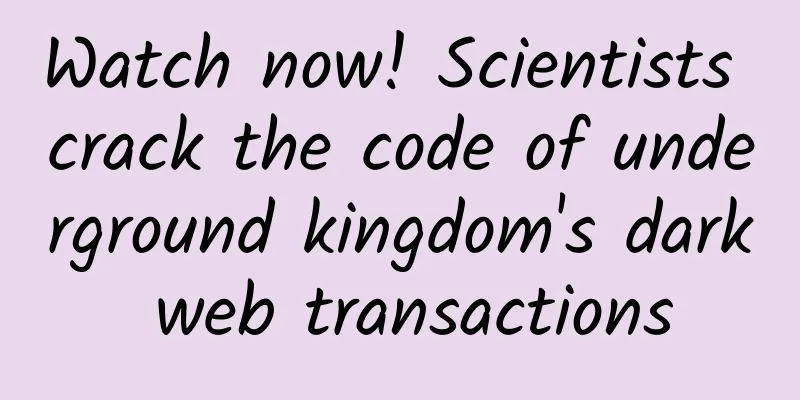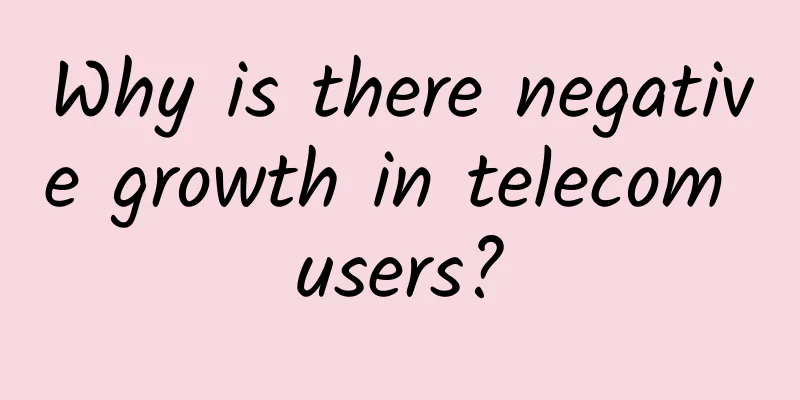Watch now! Scientists crack the code of underground kingdom's dark web transactions

|
Have you heard the story of A Chinese Ghost Story? In this story, there is a thousand-year-old tree demon entrenched in Gulan Temple and recruited Nie Xiaoqian and a group of maids. The tree demon provides them with shelter, and in return, Nie Xiaoqian and a group of maids need to help the tree demon do things. Did you know that this seemingly magical plot actually has similar transactions in nature? Trees in nature are like tree fairies. In order to better absorb water and nutrients, they gather a group of microbial communities at their roots. However, the cooperation between the "tree fairies" and microorganisms in nature is benevolent. Not only will they not harm others, but they can also produce some beneficial fungi. Although the tree demon has great magical powers, it needs the help of Nie Xiaoqian and others. Similarly, the roots of trees, especially poplars, often rely on underground fungi and bacteria to absorb water and nutrients such as nitrogen and phosphorus. Are you curious about this kind of "transaction" after hearing this? Let's find out together~ How do fungi and roots establish cooperation? The roots and underground microbial communities have established a clear division of labor, with different bacterial communities performing different functions. For example, nitrogen-fixing bacteria are good at fixing nitrogen from the air. These microbial communities transfer the absorbed water and nutrients to the tree. In return, the tree roots provide shelter for the underground microbial communities and secrete some sugars as their food. These microbial communities are mycorrhizae in nature, and the familiar "bright fungi" - truffles, matsutake, boletus, etc. are also one of them. The formation of these bright fungi first needs to form mycorrhizae with specific plant roots, with one end of the hyphae penetrating into the plant root system and the other end extending into the soil. Mycorrhizae Image source: veer Although their cooperation has long been known, the specific formation mechanism of these mycorrhizae is still unclear, that is, we do not know how fungi and roots establish a cooperative mechanism. In order to find out how this "underground transaction" is carried out, the team of young researcher Zhang Feng from Lanzhou University has been tracking and studying the formation of poplar mycorrhiza for a long time, hoping to find out how these underground "Nie Xiaoqian" get in touch with the tree demons, how they absorb "yang energy" (water and nutrients), and how they transfer the yang energy to the tree demons. Finally, after unremitting efforts, the team of young researcher Zhang Feng, in collaboration with the research group of Francis Martin from the French National Institute for Agri-Food and Environment (INRAE), published a paper in the journal New Phytologist. The article, titled “The ectomycorrhizal basidiomycete Laccaria bicolor releases a GH28 polygalacturonase that plays a key role in symbiosis establishment”, finally solved the above confusion. Zhang Feng's research group used poplar as the research object to explore the interaction mechanism between poplar's ectomycorrhiza and host plants, and found that mycorrhizal fungi can establish connections with poplar roots through a huge network that exists underground. So how do the hyphae of exorhizium enter the roots of plants? Or what is the code for their underground transactions? Although hyphae and plants both need to cooperate, they still have to solve the problem of how to "join". The place where fungal hyphae and plants join is located in the roots underground. However, it is not easy for hyphae to successfully penetrate the roots of plants: on the one hand, they have to break through the cell wall of the plant, and on the other hand, they have to cause the plant's immune response to a minimum. Therefore, ectomycorrhizal fungi chose a compromise method - they did not invade the interior of plant cells, but existed in the interstitial matrix of plant cells, forming a Haskell network structure, which is the place where both parties conduct "transactions". This Hass net is similar to the network channel for secret transactions between mycorrhizae and roots. However, the first difficulty faced by the formation of Hass net is the cell wall. Only by breaking through the cell wall can the intercellular matrix be reached. The cell walls of higher plants are mainly composed of pectin, cellulose, hemicellulose, lignin and protein, which are cross-linked with each other. Pectin, similar to a "cross-linking agent", can maintain the morphology of cells, enhance the mechanical strength of cells and participate in the physiological activities of cells. Previous studies have suggested that the pressure generated during the growth of fungal hyphae can completely dismantle the cell wall. This method of entry is relatively "violent" and can easily cause cell rejection. However, with the development of molecular biology, scientists have discovered that in the process of mycorrhiza formation, with the help of a powerful assistant, cell wall hydrolases (PCWDEs), it is possible to enter the cell wall in a relatively gentle way. Among them, polygalacturonase (endoenzyme) is likely to be the key helper for hyphae to break through the cell wall of tree roots. Mycelium Image source: veer Previous studies have shown that polygalacturonase plays an important role in the process of many pathogenic fungi breaking through (digesting and degrading) plant cell walls, but this finding has not been verified in mycorrhizae. So how can we scientifically prove that endonucleases are involved in the process of hyphae breaking through the cell wall and play an important role in it? This depends on the expression (activity) of the endonuclease during mycorrhizal formation. If the enzyme is relatively active and has good expression during the process of hyphae entering the cell wall, it can be confirmed that it plays a role in it. The experiment found that during the formation of mycorrhizae between ectomycorrhizal fungi and poplar, the reaction of the endonuclease was relatively active. Compared with the expression level on the hyphae, the endonuclease was upregulated (increased) by 2.3 times during the process of entering the cell wall. This confirms from an experimental perspective that endonuclease is a key helper of mycelium. It is like a master negotiator, negotiating with the cell wall and persuading it to soften so that the mycelium can enter the roots of the poplar. The specific process is that the endonuclease helps modify the pectin in the poplar cell wall, making the cell wall soft, similar to making a tunnel so that the hyphae can enter the cell wall more easily. This mode is gentler than removing the cell wall. The transaction process of the underground dark web We have verified the process of hyphae penetrating plant cells with the help of endonucleases. However, are there other factors affecting this process? In order to clarify this issue, we also need to verify it from the opposite side, that is, without this endonuclease, the hyphae of fungi cannot enter the cell wall. In this way, we can get a more complete experimental logic. How to achieve this specifically? This requires the help of an advanced experiment - RNA interference experiment. With the help of RNA interference experiment, we can reduce the expression of endonuclease, so that it can "work without exerting effort". At the same time, to answer the above questions, we need to use a set of advanced methods and equipment - immunolocalization and immunocolloidal gold electron microscopy. With the help of these two "magic weapons", we can see the entire process of the experiment. The image shows a poplar root that has been mycorrhized, meaning that the hyphae have penetrated deep into the root. Green represents the combination of the fungus and the cell wall, and red represents the poplar cell. Image source: Provided by Zhang Feng From the above figure, we can see that when RNA interference test (ab) was not conducted, the hyphae broke through the cell wall and began to form a trading network platform at the root of the poplar tree - the Hassell network. The mycorrhiza absorbs water and nutrients (mainly nitrogen) and then passes them to the plant through this Hassell network. When RNA interference experiments were performed, the activity of the endonuclease was reduced, and the hyphae could not enter the cell wall to form the Hastelloy's network. This demonstrates both positively and negatively the role of the endonuclease in entering the cell wall. Image source: Zhang Feng Furthermore, the process by which the endonuclease enters the cell wall is also very different from previous models. Previous studies have shown that the hyphae completely degrade the cell wall when entering the cell wall, just like violent demolition. However, this experiment found that with the help of endonucleases, the hyphae dug a tunnel in the cell wall and did not destroy the structure of the cell wall when entering the cell wall. This "gentle" approach is not likely to cause cellular immune rejection, allowing cells to better accept it, and is a new model. The underground transaction code between fungi and roots has been successfully cracked, which may play an important role in promoting human utilization of mycorrhizae, and we also look forward to this research bringing more benefits to mankind in the future! Note: Latin names should be italicized in the text References: Zhang F, Labourel A, Haon M et al. 2022. The ectomycorrhizal basidiomycete Laccaria bicolor releases a GH28 polygalacturonase that plays a key role in symbiosis establishmentNew Phytologist, 233: 2534–2547 Produced by: Science Popularization China Author: Zhao Xumao (Young Researcher, Lanzhou University) Producer: China Science Expo |
Recommend
How to monetize short videos of investment and franchising type?
Have you ever encountered such accounts when watc...
The Loess Plateau is slowly turning green...
Copyright image, no permission to reprint These t...
Dongfeng withdrew its employees but not its investment. Can the lonely Dongfeng Yulon still have fun?
It is reported that Dongfeng Motor Corporation, a...
Introducing 5 data-driven and practical customer acquisition methods
Admittedly, in many cases, the acquisition of new...
Why reinvent the wheel?
A few days ago at the React-Europe conference, I ...
How to promote Xiaohongshu notes to become popular?
It is indeed difficult for a new account to becom...
Xiaomi's loan broke Alibaba's record
There has been new progress in Xiaomi's $1 bi...
A woman used a massager to lose weight and her kidneys were "flattened" and she was sent to the ICU. Don't try these 11 weight loss methods!
Recently, a #woman in Huizhou, Guangdong used a m...
17 Tik Tok tricks to predict how to make a hit
In fact, this article is about creativity. Some o...
Can you tell if your blood vessels are blocked by running? Cardiovascular doctors debunk rumors: It's not that simple
Once the blood vessels are blocked, our organ tis...
5 pain points and 8 suggestions for community operations
This article analyzes the five pain points in cur...
Driverless cars come up with new black technology: cars stop when pedestrians wave
Researchers have developed a driverless car syste...
To promote Internet products, are you still using traditional branding methods?
As we all know, the advertising industry has a hi...
Is it true that the gallbladder is prone to inflammation when exposed to heavy fish and meat?
《Cotton Swab Medical Science Popularization》 Beij...
Which method should I choose to declare infant and child care expenses? What are the deduction ratios and standards?
To further reduce the tax burden on taxpayers and ...









